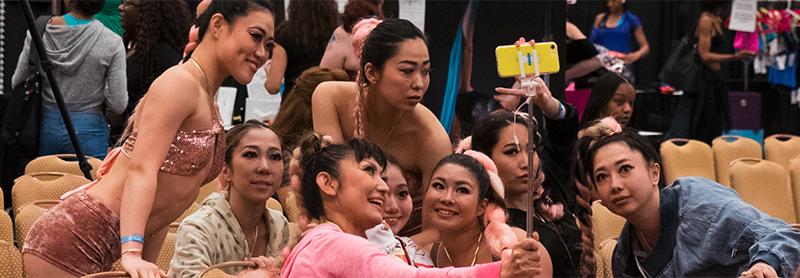Jumping back in time to the very first IPIA webinar (IPIA members can watch the…

Protect Your ASSets: Performance Liability Insurance Explained (Part 1 of 2)
Are you a professional pole, aerial, or circus performer? Do you have performer insurance? What exactly is performers’ insurance? Often performers are not aware of it, especially if they are covered under the venue or employer’s policy. However, some clubs and locations may require you to carry your own. Even if they do not, it is probably worthwhile to have it in your back pocket. If all of this already sounds overwhelming, fear not! let’s break it down.
What is performer’s insurance?
Performers insurance, or a Commercial General Liability (CGL) policy, covers claims that could come about from your performance or operations during an event you’re at. This coverage is an important component of your business and is designed to protect your financial assets if you were to be sued. You can be held liable for claims that include things such as injuries to others or damages to property arising from your performance services. This insurance does not cover any injuries that you sustain during your performance (these would be covered by your health care plan), nor does it cover any injuries you may have caused to fellow performers.
For example, if you’re a pole dancer hired to perform at an event and one of your heels accidentally flies off your foot in a spin combo and strikes an audience member in the head, you could be held liable to cover the medical expenses accrued by the individual who was struck. Or let’s say you’re a fire performer and you accidentally scorch the ground. The event/venue could ask you to pay for the property damage. If you have Commercial General Liability coverage as a performer, you can file a claim to have these losses paid for by your insurance instead of paying for them out of pocket.
What happens if a claim is submitted?
Once a claim is submitted, you are assigned a claims examiner. All claims are subject to approval or denial by the claims examiner, not your insurance company. The legal costs alone from claims like these can be financially devastating. With performer’s insurance, you’ll have the protection you need just in case something was to go wrong. Another reason you should hold this coverage is that many events/venues will ask for your proof of insurance before hiring you, and already having CGL coverage shows that you are a serious professional. Different events/venues may also ask to be listed as additionally insured on your policy, and already having a policy will allow you to fulfill the paperwork side of your contract faster.
Ok, but what is Additional Insurance?
This means that the place where you are performing wants to be protected in case something arises out of your operations while on their property. Adding an event/venue as additionally insured to your policy, protects them under your policy, allowing them to file a claim if sued due to something that arose from your actions or business. Please be aware that an additional insured can’t be another individual and must be an event/venue.
For Example, A tattoo convention had arranged for you to perform on their site on a certain day and time. Your stage pole lollipop is parked inside the convention center in an open area specially set for live entertainment and suspension exhibits throughout the day. While you are grabbing a bite on a break, the lollipop is unattended and a child thinks it’s playground equipment. They end up falling on their head suffering an injury that requires stitches. This results in the parents suing the convention for medical expenses. The event will be able to file a claim under the performer’s insurance instead of their own in this instance, saving them a possible increase in their insurance premiums due to claim activity.
Insurance is not a fun subject for anyone, especially artists. It’s not creative or lyrical. Money can sometimes be unpredictable in the entertainment industry, especially freelance so one may argue that insurance is not an expense they can budget. Though certainly understandable, imagine how much the legal costs would be if something were to happen. Stay tuned for part 2 where we break down coverage step-by-step.



